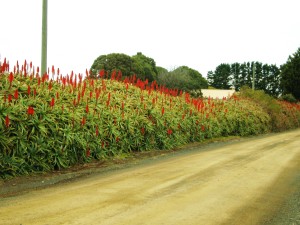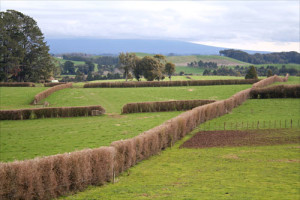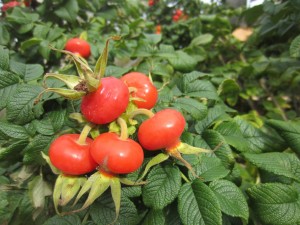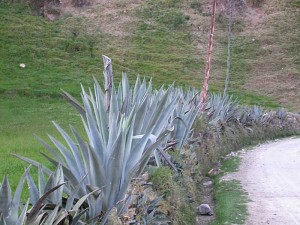LIVING FENCING FOR MEDITERRANEAN CLIMATES
Currently we are seeing great innovation and development in the realm of efficient and affordable fencing options making our role as Holistic Planned Graziers and Regenerative Agriculturalists in general all the more simple and viable. However humanity is increasingly finding it’s contexts and reference points radically shifting and given the all but inevitable move away from conventional and cheap energy sources, fabrication techniques and distribution methods it is wise to meditate upon a potentially low energy future scenario and what techniques and materials may replace our current options and ideals.
The very moment they are bought and leave the shop most modern, fabricated goods are depreciating in quality and value. Equipment rusts, machines break down, tools get lost. Biology however has the the very handy knack of not only healing itself but reproducing too. This is the basis of regenerative infrastructure. With this context in mind Living Fencing such as the U.K’s traditional Hedgerow system is a valuable study. Hedgerows of course function not only as fencing but also wildlife habitat, windbreak, food systems, aesthetics and more. Once established these physically very appealing features take little maintenance(excluding of course the ‘laying’ of the traditional hedgerow once every decade or so).
Much has been written about the hedgerow systems of the U.K’s super-moist, cool-temperate climate, but what of similar systems in other climates? In this article we explore a selection of hedgerow plants and techniques that may be explored for use within the *Mediterranean Climate Regions(MCRs)* of the world. It is not the purpose of this article to provide an extensive how-to manual but instead to foster discussion on this and similar subjects.
Let’s look at some species…
Hawthorns, Mayhaws…
Cratageus spp
.
Image source: http://fractalenlightenment.com/tl/32030/spirituality/healing-the-seven-chakras-with-herbs
Famous in the U.K as primary Hedgerow plants, Hawthorns have largely been forgotten as a food source, but many Cratageus species provide high yields of good fruit, particularly valuable as a heart treatment in herbal medicine. Couple this with their general hardiness, wildlife attracting properties, aesthetic beauty and even hardy rootstock for other more sensitive Rosaceae species. The Cratageus Genus is native to many temperate regions of the Northern Hemisphere but can and does germinate and grow happily in MCRs where there is sufficient chill for seed maturation and moisture for growth, however they can also grow well in dryer, hotter areas when nursed through the establishment period. Some less cultivated species have serious thorns, intimidating even the most ambitious stock, while others have next to no spines and large, bright red fruit. Most ornamental. Inter-plantings of more than one variety may prove a successful approach, using the spinier species as the formidable majority while dotting the planting with a more cultivated ornamental variety every so-many-metres. This would allow for extended and diverse fruit harvesting plus better cross pollination. Deciduous, good coppice/layability.
The author with a Crataegus azarole growing in the drylands of northern Morocco.
Sloe, Blackthorn
Prunus spinosa
Image source: http://wildflowerfinder.org.uk/Flowers/B/Blackthorn/Blackthorn.htm
Another U.K hedgerow staple, second perhaps only to the Hawthorn. A member of the well known Prunus genus the Sloe is a suckering shrub wielding large thorns, both traits making it ideal for hedgerows. The fruits are a small, purple and plum like, sour and astringent when raw. The traditional ingredient in Sloe Gin. A simple liqueur made by soaking the fruit in gin with sugar. Easily adapted to MCR conditions. Deciduous, good coppice/layability, tolerant of salty, maritime winds.
Seaberry, Buckthorn
Hippophae spp.
Image source: http://www.alibaba.com/showroom/pumpkin-seed-oil-organic.html
Members of the Elaeagnaceae family. Long known to practitioners of Ayurvedic medicine, the Buckthorns oil rich fruits are said to assist the healing of gastric and peptic ulcers. Extremely wind hardy, they make excellent additions to hedgerows and windbreaks. Like their relatives the Elaeagnus, they are actinorhizal nitrogen fixers. This genus deserves far more attention than it has received but thankfully it is becoming increasingly appreciated for the superlative medicinals they are. Trials need to be done for just how viable an addition this genus would be in a MCR system. This author has successfully germinated and raised H. salicifolia but not H. rhamnoides. The immense potential this genus promises for all regions where it might possibly be grown warrants our efforts to trial it further.
Cane Fruit
Rubus spp.
Blackberries are a common species found in traditional U.K hedgerows. Their long, cane growth habit and thorns form the quintessential bramble providing habitat for birds and small mammals alike and of course their fruit needs little introduction. However since the days of old when the U.K’s hedgerows were established dozens of new cane berry varieties have been cultivated from the hybridising between some of the 375 species worldwide especially with certain Raspberries, Rubus idaeus. The result is a myriad of fruiting forms, sizes, flavours and colours. Some with vicious thorns like their wilder ancestors, some all but thornless. Black berries grow extremely well within MCRs with higher rainfall. Too well for the weed conscious. In south Western Australia the high moisture, long growing seasons and lack off frosts make a perfect growing environment for cane fruit.
Dog Rose, Climbing Rose, Apple Rose, Ramanas Rose
Rosa spp.
Image source:http://c-o-m-p-a-n-y.info/event/rosehip-picking-and-syrup-making/
High in Vitamin C, most(if not all) rose hips are edible, but beware the irritating hairs surrounding the seeds. Rosa rugosa, the Apple Rose, sports one of the largest in the genus and is the perfect base for a classic Rose hip tea, syrup or wine. With its disease resistance, sprawling/climbing habit and like most roses formidable thorns, it’s no wonder this too is another tried and true U.K hedgerow addition and it is perfectly acclimatised for the warmer, dryer MCRs.
Osage Orange
Maclura pomifera
Image source: http://www.insectimages.org/browse/detail.cfm?imgnum=0008121
Sometimes called Hedge Apple and for good reason. For generations this species of medium sized tree was used as a living fence by north American farmers especially in it’s native range of eastern Texas, southeastern Oklahoma, and southwestern Arkansas. The Osage Orange, named for the indigenous tribes that shared it’s range and used it’s wood to craft their bows, was found to transplant easily and strike well from cuttings even in poor soils. It’s tolerance for strong winds, extreme heat, disease/pest resistance and it’s formidable thorns made it the perfect candidate for a stock proof, living fence in an age before barbed wire. The yellow wood is very dense, strong and durable with an MBTU rating of 30 p/cord(that’s very high). It’s fruits are not edible but may present a valuable source of starches and latex for the growing industrial sector of plant based fuels and plastics. This tree is not so well known outside of the U.S and often needs to be hunted down in arboretums and collections. It is very well adapted for growth in MCRs and use therein as a hedgerow species.
Jujubes
Ziziphus spp.
Image source: https://www.agric.wa.gov.au/minor-fruits/jujubes-western-australia?nopaging=1

Over the last couple of decades the Jujube has gone from relative obscurity in the west to become an increasingly popular fruit tree and for good reason; they are tolerant of climatic extremes, have little pest or disease issues and provide good crops of a delicious, novel and versatile fruit. Cultivated varieties are the result of hundreds of years of improvement by the Chinese, as their names would suggest… Li, Lang, Ta Jan, Sui Men etc. However less well known are their wild cousins. The spine laden Wild Jujube of Mediterranean northern Africa, Ziziphus lotus, has been used as a living fence in Morocco for generations. Forming dense thickets of impenetrable bramble up to 8m in height, even today it can be seen flanking road ways and farm yard alleys offering an easy, affordable means of penning in stock animals and keeping the predators out. In times past the fruits of the Wild Jujube were used to make wines and even breads and today the dense wood is still valued by craftsmen. Species within the Ziziphus genus are known to hybridise and perhaps an ideal hedgerow variety can be found by crossing the super-hardy, spine wielding Z. lotus with one of it’s superlative fruit bearing, domesticated cousins.
Ziziphus lotus, the wild Jujube.
Wild jujube branches piled into a makeshift fence dividing paddocks. In Ouled Hamou, northern Morocco.
Prickly Pear, Tuna, Nopales, Paddle Cactus, Indian Fig
Opuntia and other Cactus spp.
Opuntia are one of the largest genera of Cacti. Native to the majority of U.S states, the culinary uses of various species have been long appreciated. The most famous of the cultivated Opuntia is the Indian Fig, O. ficus-indica, native to central America but now grown commercially throughout the Mediterranean to semi arid world. O. ficus-indica and other Opuntia species are grown not only for their fruit but in some varieties as a vegetable. Young, tender leaf pads(Nopales) are cut up and steamed. It is also grown as a drought hardy fodder crop with the spines being burned of before feeding them to the animals. In some forms of meso-American building construction Opuntia leaves mucilaginous quality is taken advantage of by mixing it’s pulp into adobe as a binding agent. Like all Cacti it is the genera’s spines which make it a great living fence. It has been used as such for hundreds of years wherever the French, Portuguese and Spanish traders have spread it(it’s pads where stored on ship as a scurvy preventative), Africa, India, the Mediterranean.
Aloe spp.
Image source: http://reforestation.me/fire-no-fines-concrete/

Drought hardy, pest/disease resistant and easy to propagate and establish. Aloes are the lazy gardeners best friend. Like other succulent plants I.e Cacti & Agave, Aloes are extremely fire retardant making them a valuable consideration for a fence/hedgerow on the fire sector of a homestead or other building cluster. Their flowers are stunning, boasting rocketing, seasonal spears of bird attracting reds, oranges and yellows. And of course the healing, cooling, medicinal qualities of Aloe vera and other species are well known.
Agave spp.
Image source: http://jeffpippen.com/peru/peru-8.htm
Aside from Tequila and fibre production Agaves have largely been left out from modern plant cropping. However in times past the some 200 plus species were an indispensable part of the traditional life of meso-American peoples. Providing, pins and needles for fashioning clothes from hides, many offering nectar eaten as a sweet food or fermented into a wine called, pulque(be aware the sap of some species can cause acute irritation) and an excellent source of long and short fibre. Today those fibres are the basis for a small industry in southern Africa where it is used to make twine, rope, string, fishing nets, buffing cloth, dart boards and hammocks.
”But the miracle of nature was the great Mexican aloe(Agave), or maguey, whose clustering pyramids of flowers, towering above their dark coronals of leaves, were seen sprinkled over many a broad acre of the table-land. As we have already noticed its bruised leaves afforded a paste from which paper was manufactured, its juice was fermented into an intoxicating beverage, pulque, of which the natives, to this day, are extremely fond; its leaves further supplied an impenetrable thatch for the more humble dwellings; thread, of which coarse stuffs were made, and strong cords, were drawn from its tough and twisted fibres; pins and needles were made from the thorns at the extremity of its leaves; and the root, when properly cooked, was converted into a palatable and nutritious food. The agave, in short, was meat, drink, clothing, and writing materials for the Aztec! Surely, never did Nature enclose in so compact a form so many of the elements of human comfort and civilisation!” – William H. Prescott
It is their ease of propagation, their ability to grow together in dense clumps and their characteristic spines that make them excellent candidates for living fencing. Dense enough plantings may even prove to be fox proof.
African Boxthorn
Lycium ferocissimum

http://www.dpi.nsw.gov.au/agriculture/pests-weeds/weeds/profiles/african-boxthorn
Aside from it’s reputation and status as a declared noxious weed(which has been duly noted by the author) this plant is perfect as a MCR hedgerow addition. Some may recognise the genus name. Lycium, of the Solonaceae family. The Goji Berry is Lycium barbarum. The Wolf Berry is Lycium sinensis. For years the Boxthorn’s berries have held the reputation of being toxic(common in Australia for plants catagorised as noxious weeds) where it spread ferociously throughout the temperate, semi-arid and MCRs. More recently, adventurous foragers have been experimenting with eating the fruit, sometimes en masse and have discovered(this author included) no noticeable ill effect. The folks at Goji Berry Australia had this to say…
”The dried berries are usually for sale in the health food stores as ‘Goji’, but that frequently means a combination of L. chinense and L. barbarum and L. fericossimum. You never know. For all intents and purposes, regarding the fruit, they seem identical. Even the much maligned ‘African Boxthorn’ has highly edible and nutritious fruit that are hard to distinguish from any of the other varieties.”
It’s small, bright red fruit may or may not hold the same medicinal and nutritional benefits for humans as their more popular cousins but they are at least adored by wildlife; birds, skinks and even foxes. Bill Mollison suggested them as an excellent chicken forage species. It grows as a dense, medium to large shrub and as it’s species name suggests it sports ferocious spines, the kind stock don’t mess with and small, insectivorous birds favour as habitat. Thanks in part to a very strong root system they are very tough once established even withstanding salt laden coastal winds.
Natal Plum
Carissa macrocarpa
Image source: http://www.daleysfruit.com.au/fruit%20pages/dwarfs.htm
As it’s name suggests the Natal Plum is native to South Africa where it is befittingly known as the Num Num by Zulu tribes; and it’s fruits are indeed delicious. At best they are kinda like a strawberry… sort of, but few people seem aware of it’s edibility if they even know of it at all. That’s a shame but it is understandable. Like it’s close relative, the Oleander, most parts of the Natal Plum are(said to be) very toxic. The jury appears to still be out on just how potently poisonous it really is. This coupled with it’s spines mean that most people stay away from it in a domestic setting. However thanks to it’s heat and maritime hardiness and attractive, shiny green foliage it is used extensively as a roadside planting by many municipalities of the semi-arid/MCR world. This author saw them often planted in car parks and by roadsides in southern California and has eaten from them in Western Australia. There spine are big enough, tough enough and sharp enough to deter stock however just how dangerous it is if they ingest the foliage is unclear. Best to do some more homework on this one. Work is being done to select or improved fruiting varieties.
Mesquite
Prosopis spp.
Image source: http://breakingmuscle.com/nutrition/mesquite-southwest-superfood
Ahhh mesquite.. People seem to either love it or hate it more much the same reasons. It’s REALLY good at doing what it does. That is to colonise warm, dry, low successional landscapes and produce large amounts of seed pods(potentially amazing food), which helps to colonise more land.
Hedge Wattle
Acacia paradoxa
Kei Apple
Dovyalis caffra
Image source: http://perthzoo.wa.gov.au/animals-plants/plants/kei-apple/
Quince
Cydonia oblongata
Honey/Chinese Locust
Gleditsia spp.

Imagesource: https://commons.wikimedia.org/wiki/Commons:Quality_images_candidates/Archives_November_2009
J. Russell Smith wrote warmly of Gleditsia triacanthos, The Honey Locust, nearly one hundred years ago in his classic publication ‘Tree Crops For Permanent Agriculture’ in which he sung it’s praise as a an excellent multi-purpose fodder crop for temperate climates. Since then horticulturalists and tree crop enthusiasts have maintained an eye on the species selecting varieties for ornamental colours, thornlessness and improved fruiting. However the thorns of G. triacanthos (and it’s less well known but very promising sibling G. sinensis) would be welcome in their potential function as hedgerow additions. The Gleditsia specie’s ability to coppice and be layed into more effective hedge means they may function as main plantings within hedgerows much in the way the Hawthorn or Sloe do. Their thorns and pods a major plus as is their ability to fix nitrogen for themselves and their other hedgerow counterparts. Fast growing, multi function.
Pros & Cons
There are a few points that need to be thought upon when planning for these kinds of plants in these kinds of systems…
Hardiness in cultivated plants is always a sort after trait. Virility is a plus but can of course mean for weed potential. The author strongly suggests a protracted meditation on any plant choices and directs the reader to past discussion on the subject by David Holmgren and Jeff Nugent. It is also worth noting that some plants with formidable thorns can cause tyre punctures. Will you be operating tyred vehicles in proximity to systems with plants like Gleditisia triacanthos?
There are many potentially variable micro-climates within any MCR. If you are using plants from cool-temperate regions and are hoping for them to fruit then make sure that your site has sufficient chilling hours.
Techniques and planting combination need to be trialed.
We will likely see a return to the valuing timbers above more modern, conventional building materials as industrial fabrication drops in productivity. Hedgerows might not provide the timber that Farm Forestry will however as we look to Appropriate Technologies like Wood Gasification, Rocket Stoves units and other wood powered devices, the value of woody bi-products of all forms of Forestry(that in recent times have been viewed as waste/liability) becomes clear. In this case maintenance results in a yield.
There are several California native shrubs that would work well as hedgerows, specifically…
- Rhamnus crocea
- Rhus integrifolia
- Ceanothus spinosus
- C. megacarpa
- Yucca whipplei
References
https://chimneysweeponline.com/howood.htm
http://www.gojiplantsaustralia.com.au/
Wild Jujube
http://www.jstor.org/discover/10.2307/3987753?uid=3737536&uid=2&uid=4&sid=21104173886767
Opuntia
http://www.angelfire.com/bc/eucalyptus/desertnorthwest/articles/native_cacti.html
holmgren
http://holmgren.com.au/wp-content/uploads/2013/02/23_weeds_or_wild_nature.pdf
© Copyright Byron Joel, Oak Tree Designs, 2014














